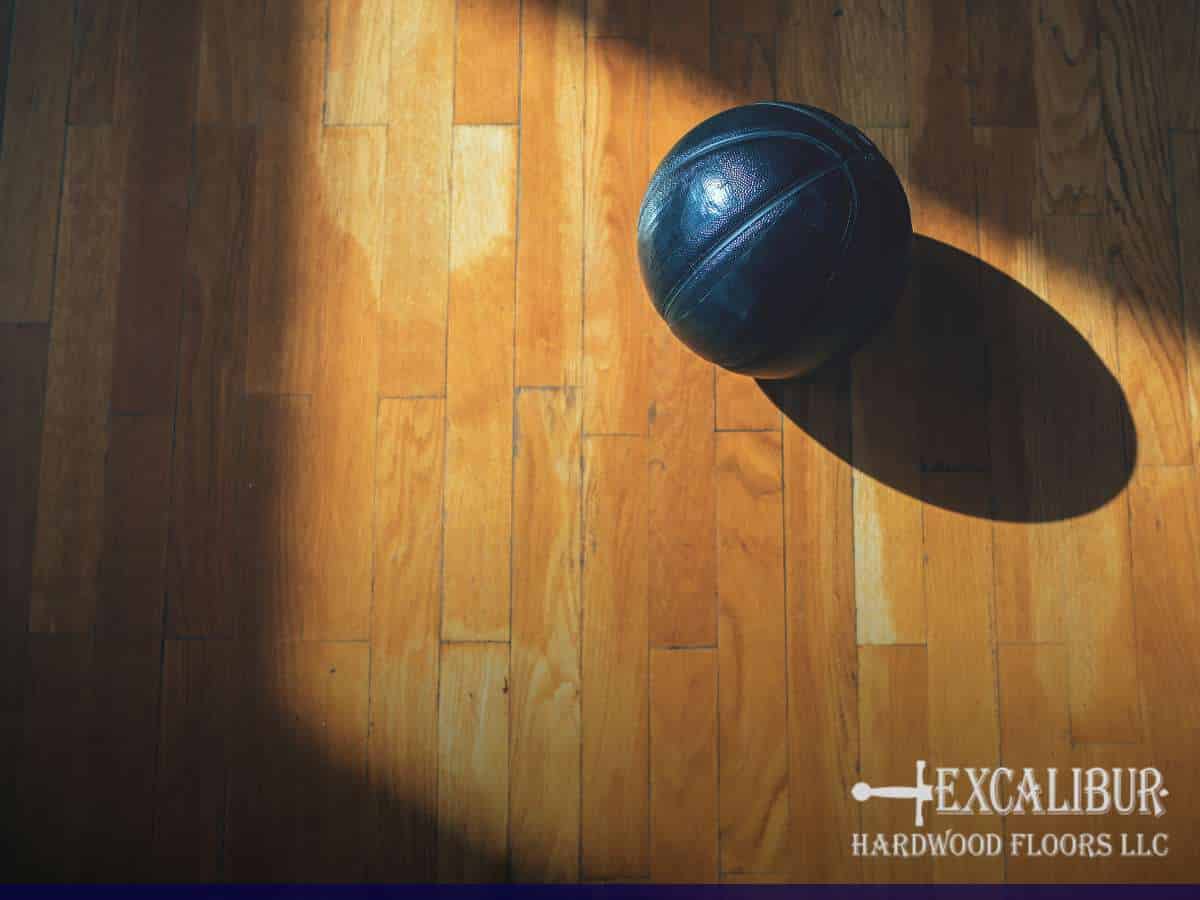Hardwood Gym Floor Installation: A Contractor’s Guide to Preparation & Setup
Step-By-Step Preparation For Installing a High-Performance Gym Floor
Welcome to our step-by-step guide to hardwood gym floor installation, where we provide the most important details of this process. From preparing the surface to checking the results, we’ll take you through each step to guarantee a long-lasting and beautiful floor for your gym area.
Gym flooring serves as the foundational element for any successful fitness area, including schools, universities, and recreational centers. It plays a vital role in these dynamic spaces, fostering activity and growth. That’s why it’s crucial to ensure their proper installation before use.

Step 1: Test the Concrete Slab
For a successful hardwood floor installation, your concrete slab must meet specific criteria, whether you’re replacing an old floor or installing a new one. Before installing the floor, the contractors should run tests that ensure the slab is dry, smooth, and flat before proceeding with the process.
All three requirements are equally important, and your contractor shouldn’t overlook any of them. This is why you shouldn’t stay in the dark during the process, and why we will delve deeper into each of these three categories:
Dryness
Moisture is the worst enemy of hardwood floors. Hardwood gym floors are vulnerable to water damage, which can cause problems like cupping and buckling. To avoid potential water damage, the concrete must be dry before installing a new hardwood floor. The slab must be cured for at least 60 days before conducting dryness tests.
Avoid rushing — proper curing directly affects long-term floor performance. If in doubt, hire a third party to test the slab’s moisture levels. This way, you ensure the concrete slab meets the necessary expectations and standards for a new hardwood installation.
After waiting 60 days from the concrete slab’s pour, you can conduct a dryness test. This test has two parts: a relative humidity test and a calcium chloride test. The relative humidity test measures the humidity levels in the concrete. In contrast, the calcium chloride test measures the amount of moisture passing through the slab.
Flatness
If you’re looking for maximum floor performance, flatness is something you definitely shouldn’t ignore. The MFMA guidelines clearly outline the necessary concrete slab flatness requirements to ensure proper installation.
Installing hardwood over an uneven concrete floor can lead to issues such as inconsistent ball bounce, vibrations, and even dead spots. Furthermore, an uneven floor not only compromises performance but also detracts from the aesthetic. Since the hardwood will conform to the slab’s contours, a non-flat concrete base will give the impression of improper hardwood installation.
Softness
Last but not least, the concrete should be soft enough, but not too soft! The concrete strength must have a compressive strength between 3,000 P.S.I. and 3,500 P.S.I., with all high spots being ground level. Overly-soft concrete is more costly to polish and grind, and it also has lower compressive strength. The primary cause of overly soft concrete is excess water, though other factors can also contribute.
Step 2: Maintain Proper Climate Conditions
Hardwood flooring is sensitive to humidity and temperature changes. We recommend maintaining a stable environment in the space where the floor will be installed, typically between 55°F to 75°F with a relative humidity of 35% to 50%. These conditions should be consistent for at least one week before and after installation.
To make the process even better, you can always acclimate the hardwood materials. Simply let the hardwood flooring materials acclimate to the space before starting the installation. This usually means leaving the materials on-site for 5–7 days in their unopened packaging so they adjust to the room’s temperature and humidity.
Step 3: Clean & Prepare The Subfloor
Remove any debris, dust, adhesives, or old flooring materials to prepare the surface. Keep in mind that the subfloor should be clean, smooth, and completely dry to guarantee a perfect surface for the hardwood installation. If you’re installing over concrete, you may need to grind and seal your floor in addition to the vapor barrier.
Step 4: Install A Vapor Barrier Or Underlayment (If Needed)
Depending on the subfloor and the type of hardwood being installed, you may need to install a moisture barrier or underlayment to protect the hardwood and improve performance, especially in high-traffic gym areas.
Step 5: Plan The Layout
Plan the layout of the hardwood boards in advance. This includes marking guidelines for alignment and identifying how the planks will be positioned according to court lines and other features.
Step 6: Customize & Finish Your Hardwood Gym Floor
Logos & graphics
You can add a personal touch to enhance the visual appeal of your gym floor. Feel free to add custom graphics, text, and logos that allow you to highlight your school or organization’s brand. You are also free to choose colors and design elements that match your preferences, resulting in a distinct and dynamic gym floor.
Sealing & Finishing Wood Floors
A protective sealant or finish is crucial for the durability and longevity of a wood gym floor. This layer protects the floor against wear and tear and simplifies maintenance. We also recommend adhering to the manufacturer’s guidelines for maintenance and refinishing whenever necessary.
Step 7: Find a Trusted Hardwood Gym Floor Contractor for Your Project
Preparing for a new hardwood gym floor doesn’t have to be challenging if you know the right steps. Of course, it’s also vital to pick a reliable and trustworthy residential flooring contractor for your project. An experienced flooring contractor will know how to guide you through this journey and explain everything as they carry out the project.
That’s why we invite you to contact Excalibur Hardwood Floors, the pros at gym floor installation and repair! Contact us now for more details.





